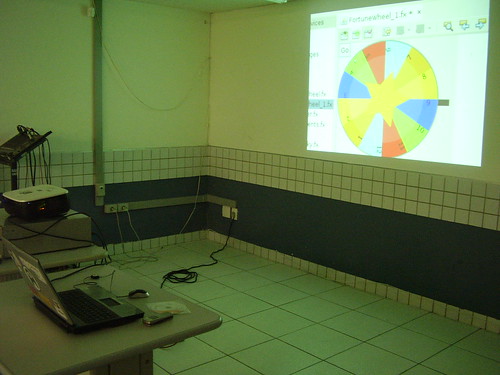
Creative Commons Image Está cada vez mais fácil colaborar com projetos livres.Quem diria que você poderia blogar sobre um projeto livre e ainda ganhar dinheiro e brindes? Esse é o
Concurso de Blogagem do Netbeans IDE 6.1 Beta. Blogando você disputa:
- 10 chances de ganhar um vale-compras American Express no valor de U$ 500,00.
- 100 chances de ganhar camisetas do Netbeans.
Tudo que você tem que fazer é:
- Baixar o Netbeans 6.1 Beta (ou o último release) e experimentar.
- Blogue sobre isso.
- Envie a URL do seu blog e post.
- Faça isso antes de 18 de Abril de 2008!
Os posts enviados seram julgados e serão escolhidos 10 vencedores para ganhar os vale-compras. Os 100 melhores posts ganham camisetas do Netbeans.
Basicamente é isso mas há informações mais detalhadas na página de regras do concurso. Se você estiver com preguiça de ler eu fiz esse perguntas e respostas.
Perguntas e Respostas
O que é esse Netbeans 6.1 Beta?
Netbeans é uma IDE (ambiente de desenvolvimento integrado), um programa que lhe ajuda a construir programas. É multiplataforma (você pode usar no Linux, Windows, Opensolaris, etc), tem suporte há várias linguagens (Java, C/C++, Ruby, PHP etc), disponÃvel em diversos idiomas (a comunidade de tradução para português é uma das mais ativas) e livre (disponÃvel em licenças GPL e CDDL). Para saber mais dê uma olhada na página de caracterÃsticas do Netbeans.
Eu posso fazer um post em português?
Sim. Você também pode postar em inglês, espanhol, russo, francês, chinês simplificado, japonês e polonês.
É sorteio?
Não. Os melhores posts serão julgados e classificados. Se seu post estiver entre os 100 melhores você ganha uma camiseta do Netbeans, se estiver entre os 10 melhores, quinhentas doletas. 😉
E eu vou falar do que nesse post?
Teste o Netbeans 6.1 Beta, procure as novidades em relação ao Netbeans 6.0.1, mostre como fazer certas coisas, tire screenshots. Enfim, seja criativo!
Você pode dar uma olhada na lista de caracterÃsticas e novidades no Netbeans e se inspirar.
Mas eu não tenho um blog?
Já pensou em criar seu próprio blog? Eu sugiro que dê uma olhada no wordpress.com onde você pode hospedar seu blog de graça usando um ótimo motor de blogs.
Eu posso pegar o post bacana de alguém e submeter dizendo que é meu?
O que é que você acha? ¬_¬
Não, não pode.
E se eu pegar um post bacana de alguém, em outra lingua e submeter dizendo que é um post original meu? Pode?
Não. Claro que não. Você vai ser desclassificado se fizer isso.
Boa blogagem pra você.












